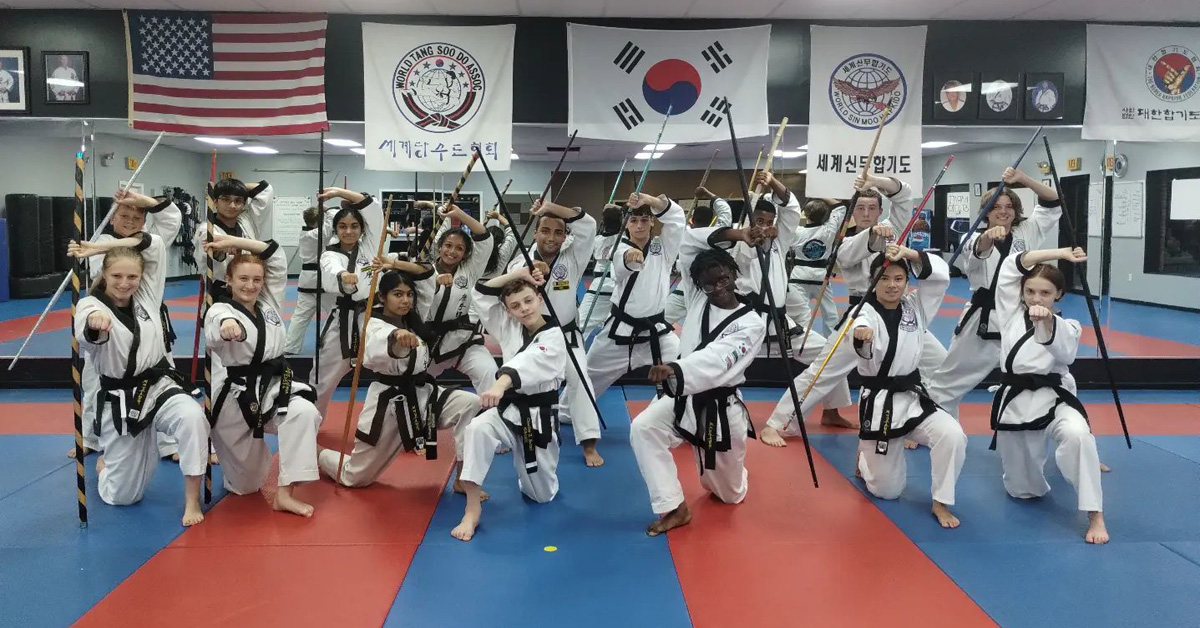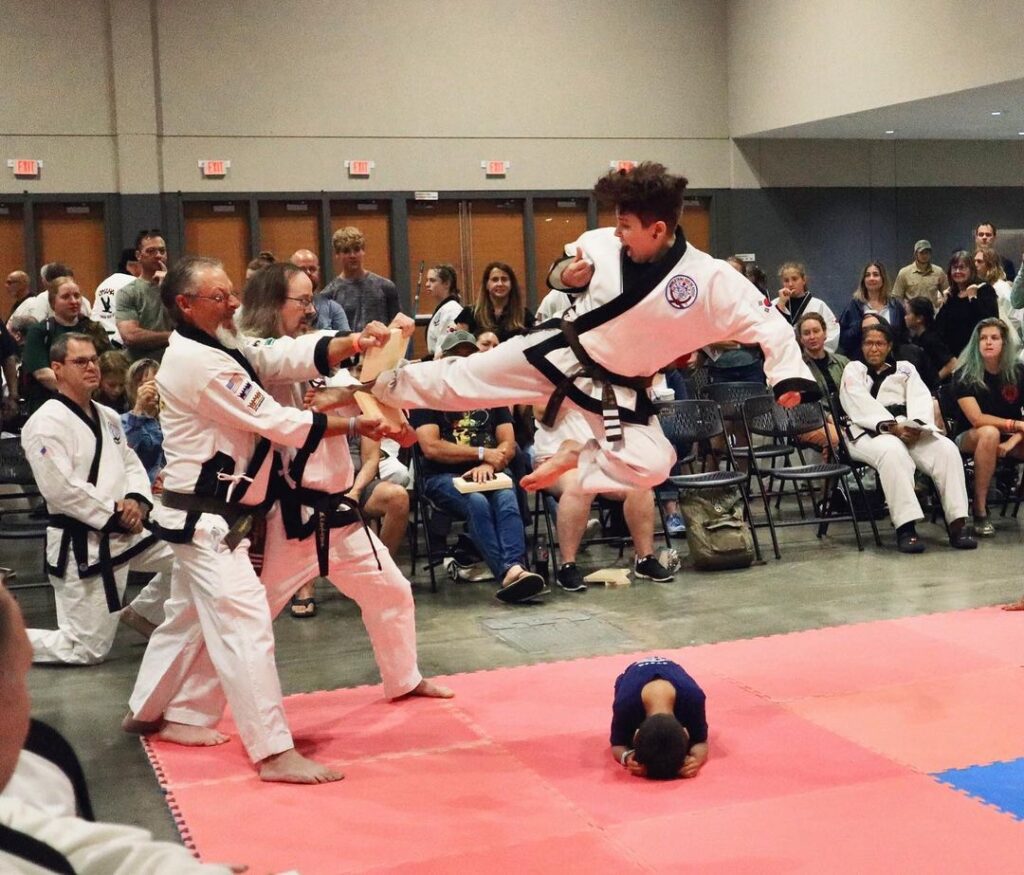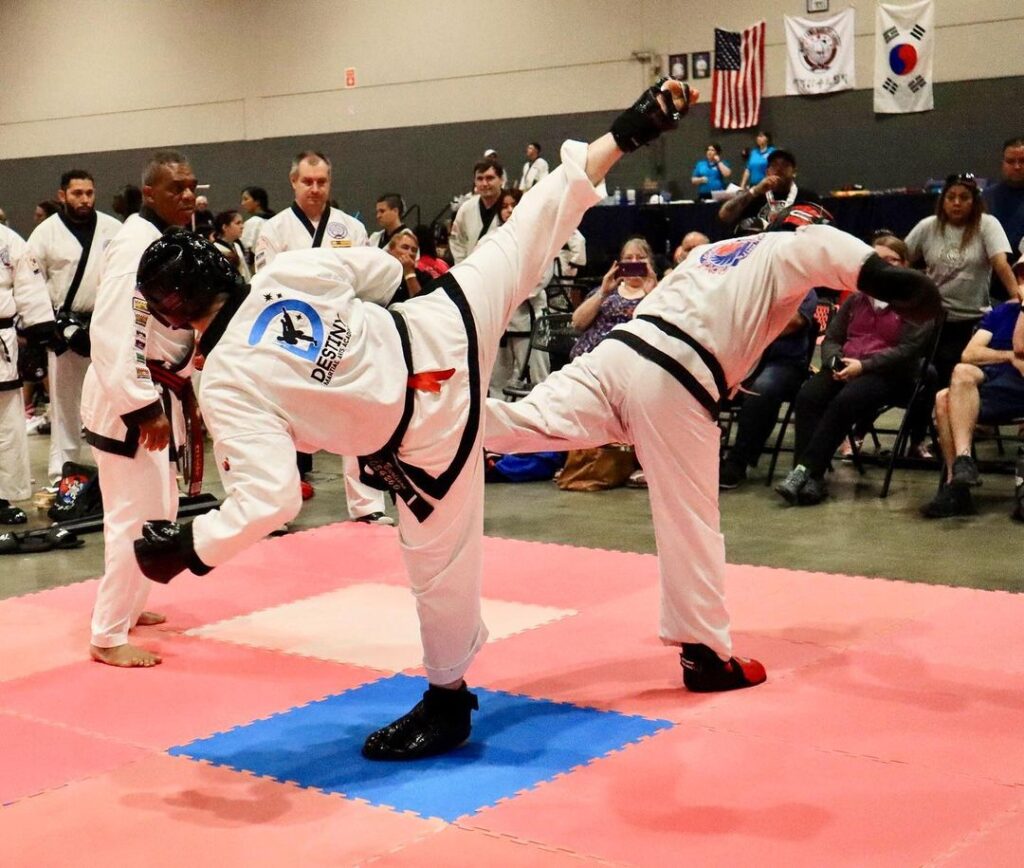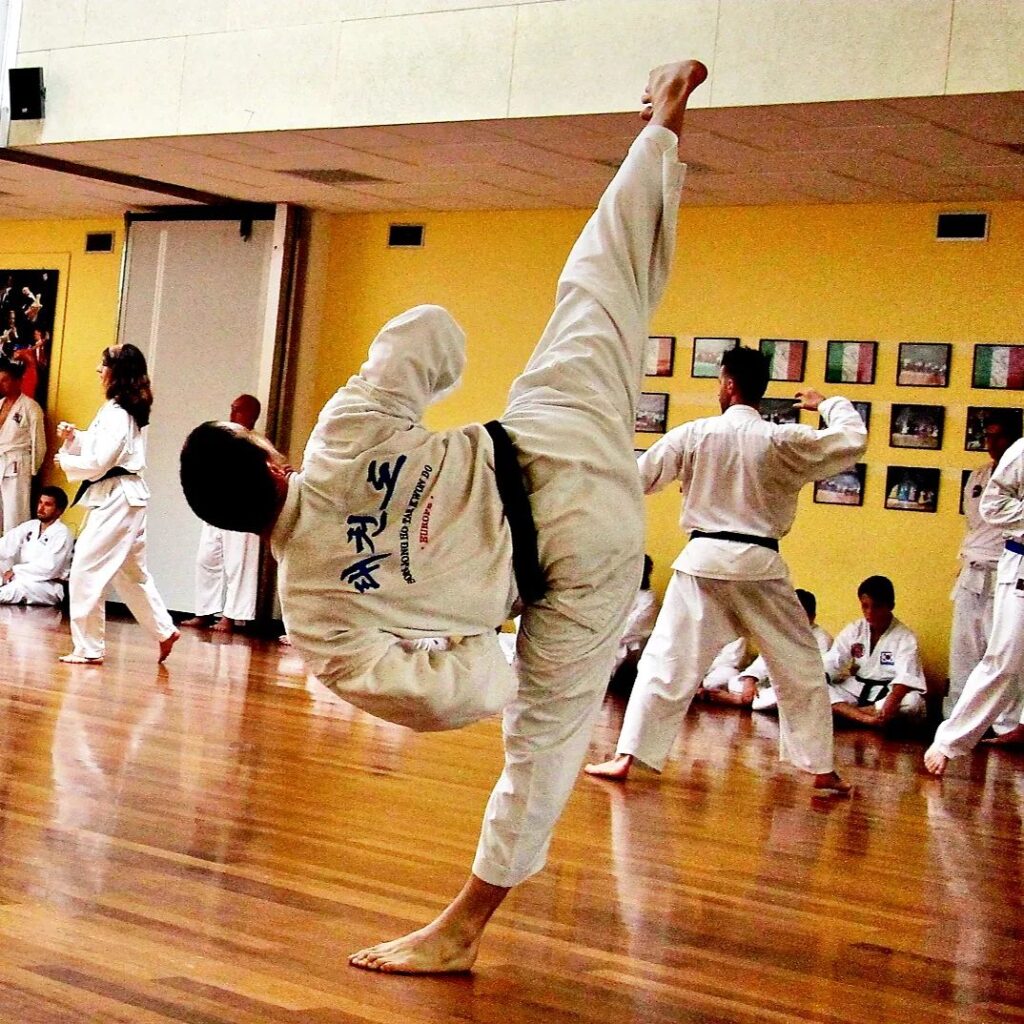Tang Soo Do: One of the Traditional Korean Martial Arts

When discussing Korean martial arts, people generally bring up Taekwondo and Hapkido. Leaving out the effective and underrated martial art of Tang Soo Do.
Here’s our breakdown of the Korean martial art known as Tang Soo Do. Detailing how the martial art was developed and its various aspects.
What is Tang Soo Do?
Tang Soo Do is a Korean martial art that was established in 1944 by Grandmaster Hwang Kee. One of the most important and influential Korean martial arts in history.
TSD is a striking martial art that was influenced by various Korean, Chinese, and Japanese martial arts. One of the martial arts that was the most influential on Tang Soo Do was Karate and Chinese martial arts created within the Shaolin Temple.
The martial art has grown into an internationally practiced form of self-defense that’s practiced by millions worldwide.

The History of Tang Soo Do
Tang Soo Do developed at the same time as Taekwondo and Hapkido in the 1940s. Its development was possible due to the Japanese losing control of Korea during WW2.
Hwang Kee
The martial art of Tang Soo Do was developed by Korean martial artist Hwang Kee. One of the most influential Korean martial artists in history and one of the five founders of modern Korean martial arts.
Kee first learned the Korean martial art of Taekkyon while he attended school. He wanted to learn more martial arts, but he was limited due to Japan’s law forbidding the practice of Korean martial arts.
His choices were limited due to the Japanese occupation, so he began learning Okinawan Karate. Learning from books that were available in his local library.
During this time, Kee would also secretly learn and master the Korean martial art of Subak and master Taekkyon.
Since practicing Korean martial arts was forbidden by the Japanese, Hwang got the attention of the Japanese police. Forcing Hwang to flee to China, where he claimed to have scaled the Great Wall.
To survive, Kee would work on the construction of the Manchurian Railroad. While working on the railroad, he met Chinese martial arts master Yang Kuk Jin.
During his time in China, Kee would learn various Chinese martial arts under Master Yang. Everything from Kuk Sool and Tai Chi Chuan from the Chinese master.

The First Tang Soo Do School
After the Japanese occupation of Korea ended, Kee would return to his homeland to teach martial arts. His first attempt at opening a school occurred in 1945, which he called Hwa Soo Do(Flowering Hand Way).
This first attempt would be unsuccessful, and Hwang would try again in the early 1950s. Changing the name of his school to Tang Soo Moo Duk Kwan, which was a name Koreans were more familiar with.
In 1957, Kee made changes to his teachings after reading Muye Dobo Tongji. A book from the 17th century that was commissioned by the king of Korea, which depicted various indigenous Korean martial arts.
He would also rename his style Soo Bahk Do, which would remain the name of his style for the next thirty years.
The Growth of Tang Soo Do
Over the next thirty years, Kee’s martial art had significant growth. It was one of the most practiced Korean martial arts during the 1960s.
Master Kee would help co-found the Korean Soo Bahk Do Association. After being established, the Korean government registered Soo Bahk Do as an official traditional martial art.
Soo Bahk Do or Tang Soo Do, also called, would become an internationally practiced martial art. Hwang Kee would live to see his martial art be taught across the world.
What is the Meaning of Tang Soo Do?
Each word of the martial art has a deeper meaning. Putting them all together forms the name of the martial art.
- Tang: Tang refers to the Tang Dynasty of China that existed from 618 to 907 AD. During this time, there was a large amount of cultural exchange between Korea and China. Using this name symbolizes the respect that China had for influencing this martial art.
- Soo: Soo translates to “hand” or “technique” in Korean.
- Do: Do translates to either the path or the way in Korean.
The Techniques of Tang Soo Do
Tang Soo Do consists of a wide variety of techniques. Here are some of the Jireugi(Striking) and defensive techniques that are taught within the martial art.
Punches(Joomuk Taerigi)
- Jireugi(Jab)
- Twio Jireugi(Cross/Straigt)
- Gulgi Jireugi(Hook Punch)
- Chook Jireugi(Uppercut)
- Dung Joomuk Taergi(Back Fist Strike)
Kicks(Chagi)
- Ap Chagi(Front Kick)
- Dollyo Chagi(Roundhouse Kick)
- Yop Chagi(Side Kick)
- Naeryeo Chagi(Ax Kick)
- Bituro Chagi(Spinning Kick)
Blocks(Makgi)
- Bakot Palmok Makgi(Outer Forearm Block)
- An Palmok Makgi(Inner Forearm Block)
- Sonkal Makgi(Knifehand Block)
- Doo Sonkal Makgi(Double Knifehand Block)
Stances(Seogi) Forms(Poomsae/Hyung)
- Kima Seogi(Horse Stance)
- Ap Seogi(Front Stance)
- Dwitbol Seogi(Back Stance)
Hyung(Form)
Tang Soo Do have various forms, just like in Karate or Taekwondo. At each rank, there are different hyungs that TSD students perform.
The Tang Soo Do Belt System
The most commonly used Tang Soo Do belt system consists of six belts.
- White Belt
- Orange Belt
- Green Belt
- Blue Belt
- Brown Belt
- Black Belt
Some TSD schools may use a slightly different belt system, but the majority use this belt system. It’s the official belt system of the world’s biggest Tang Soo Do federations.
On average, it takes around 3-years to complete the system and earn a TSD black belt. Three years if you’re dedicated and around five if you regularly train.
The Philosophy of Tang Soo Do
Hwang Kee would base much of the teachings of Tang Soo Do on the Chinese philosophy of Taoism. Focusing on living in harmony with the Tao.
Kee would also state that perfection in martial arts could never be reached. That is why he preferred to wear a midnight blue belt instead of a traditional black belt worn by masters.
In Korean culture, the color black signifies death, while midnight blue represents being limitless. Symbolizing that Tang Soo Do students had limitless possibilities to improve their abilities.

Famous Tang Soo Do Practitioners?
- Chuck Norris: The martial arts icon is a Tang Soo Do black belt and various other martial arts. Norris said that he learned the martial art while serving in the US Air Force.
- Michael Jai White: Action movie star and director Michael Jai White is an expert at numerous striking martial arts. Tang Soo Do happens to be one of them.
- Bill “Superfoot” Wallace: Bill “Superfoot” Wallace is a revered kickboxing champion and martial artist. He holds many black belts, including forms of Karate and Tang Soo Do.
- Don “The Dragon” Wilson: An 11x kickboxing world champion and actor, who holds a black belt in TSD and many other styles.
Should You Learn Tang Soo Do?
Tang Soo Do is an effective striking martial art that will improve your self-defense skills. If you ever train with a TSD practitioner, definitely try picking up some techniques from them. They’ll help give you a better overall striking game.






